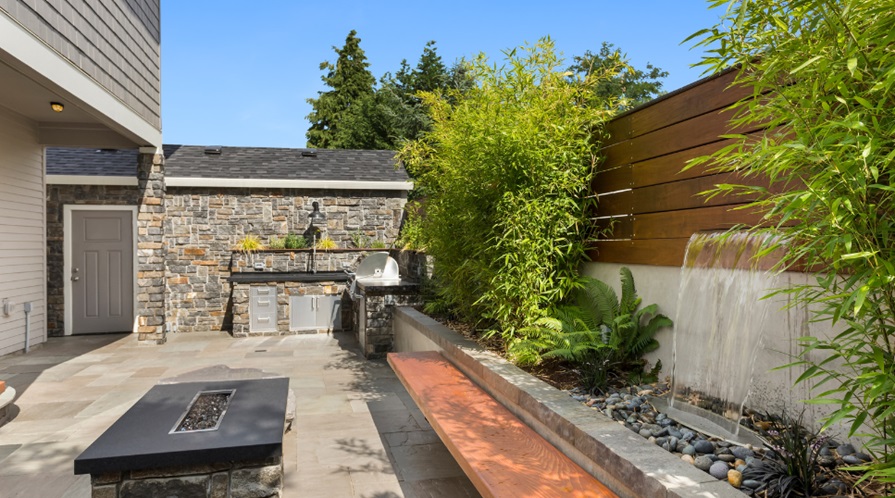In the realm of home improvement, hardscapes have emerged as a powerful tool for enhancing both the aesthetic appeal and monetary value of properties. Hardscaping, the practice of incorporating non-living elements into landscape design, has gained significant traction among homeowners and real estate professionals alike. From elegant patios to sturdy retaining walls, these permanent fixtures are transforming outdoor spaces and leaving a lasting impact on property values.
The Rise of Hardscaping in Modern Landscapes
Hardscaping in Atlanta has evolved from a mere luxury to an essential component of outdoor design. As urban areas expand and lot sizes shrink, homeowners are increasingly turning to hardscapes to maximize their outdoor living spaces. These features not only add functionality but also create visually striking elements that set properties apart in competitive real estate markets.
Popular Hardscape Elements
- Patios and Decks: These extensions of indoor living spaces provide perfect areas for relaxation and entertainment.
- Walkways and Driveways: Well-designed paths and driveways enhance curb appeal and improve accessibility.
- Retaining Walls: Beyond their practical purpose of preventing soil erosion, these structures can serve as eye-catching design elements.
- Water Features: Fountains, ponds, and waterfalls add a touch of tranquility and sophistication to any landscape.
- Outdoor Kitchens: These functional and luxurious additions are becoming increasingly popular among homeowners who enjoy outdoor entertaining.
The Impact on Property Value
Investing in hardscapes can yield significant returns when it comes to property value. A well-executed hardscape design can increase a home’s value by up to 20%, according to some real estate experts. This boost in value stems from several factors:
- Enhanced Curb Appeal: First impressions matter in real estate, and hardscapes play a crucial role in creating an inviting exterior.
- Expanded Living Space: By effectively increasing the usable area of a property, hardscapes make homes feel larger and more versatile.
- Low Maintenance: Compared to traditional landscaping, hardscapes require minimal upkeep, appealing to potential buyers looking for low-maintenance properties.
- Energy Efficiency: Strategically placed hardscapes can improve home energy efficiency by providing shade or redirecting wind.
Considerations for Hardscape Implementation
While the benefits of hardscaping are clear, homeowners should approach these projects thoughtfully:
- Professional Design: Consulting with landscape architects or hardscape specialists can ensure optimal design and implementation.
- Material Selection: Choosing durable, high-quality materials that complement the home’s architecture is crucial for long-term value.
- Permits and Regulations: Many hardscape projects require permits and must adhere to local building codes.
- Balance with Softscaping: Integrating hardscapes with traditional landscaping elements creates a harmonious outdoor environment.
Future Trends in Hardscaping
As technology and design preferences evolve, so too does the world of hardscaping. Emerging trends include:
- Sustainable Materials: Eco-friendly options like permeable pavers are gaining popularity for their environmental benefits.
- Smart Hardscapes: Integration of technology, such as built-in lighting or heating elements, is becoming more common.
- Multifunctional Designs: Hardscapes that serve multiple purposes, like seating walls that double as planters, are on the rise.
In conclusion, hardscapes offer a compelling way to boost property value while creating functional and beautiful outdoor spaces. By carefully planning and implementing these permanent landscape features, homeowners can enjoy their enhanced outdoor areas while also making a sound investment in their property’s future value.

